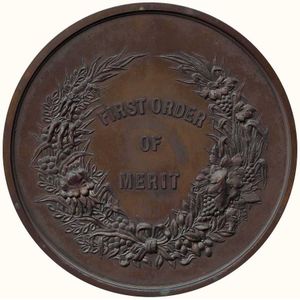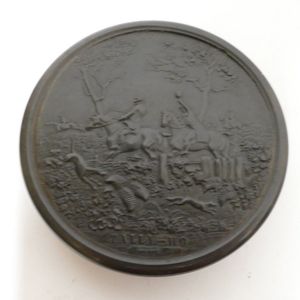Regency Pressed Horn Snuff Box with Fox Hunting Scene
You must be a subscriber, and be logged in to view price and dealer details.
Subscribe Now to view actual auction price for this item
When you subscribe, you have the option of setting the currency in which to display prices to $Au, $US, $NZ or Stg.
- Lyre Motif - The lyre motif is an ancient decorative design that is believed to have originated in ancient Greece, where the lyre was a popular musical instrument. The lyre itself was often decorated with ornate carvings and designs, including the iconic lyre motif.
In ancient Greek mythology, the lyre was associated with the god Apollo, who was the patron of music and the arts. The lyre was said to have been invented by the god Hermes, who presented it to Apollo as a gift. As a result, the lyre became a symbol of creativity, inspiration, and artistic expression.
The lyre motif typically features a curved or S-shaped body, with strings extending upwards from the base. The motif was often used in architectural decoration, as well as on pottery, jewellery, and other decorative objects. - Horn - Full horns were used for making drinking vessels and powder horns. A number of larger horns or antlers could be combined together to make furniture and decorative items such as chairs and lamps.
As a material, horn was formerly used in all types of objects such as snuff boxes, lanterns, musical instruments, items for personal grooming, cutlery handles, walking sticks. Some items of horn are finely decorated with silver or mounted in silver. - Regency Period - The Regency period in English furniture design refers to the period when King George III, was declared unfit to rule in 1811, and his son ruled as proxy as Prince Regent, until 1820, and then, after the death of his father as George IV until his death in 1830. The Regency period was preceded by the Georgian period (George I, George II, and George III: 1714 - 1811), and was followed by the William IV period, which only lasted until 1837 when William IV died as was succeeded by Queen Victoria.
This item has been included into following indexes:
Visually similar items

1986 Commonwealth Games in Edinburgh, Participation Medal, 69 mm diameter

Adelaide Jubilee International Exhibition 1887 bronze medallion first order of merit, in fitted leather box awarded to Miss M.Solomon. Diameter 7.5 cm

Participation Medals, from 1970 Commonwealth Games in Edinburgh & 1990 Commonwealth Games in Auckland, fine condition, in original presentation boxes. (2 items)

1970 Commonwealth Games in Edinburgh, Participation Medal, 57 mm diameter, fi ne condition, in original presentation box
